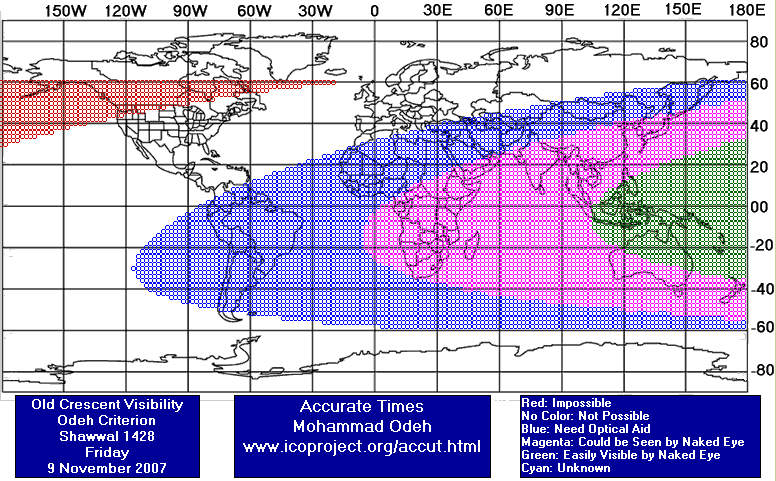Visibility of Thul Keadah Crescent
(1428 AH)
- When to Observe Thul Keadah Waxing (NEW) Crescent ?
- Thul Keadah Waxing (NEW) Crescent Observation Results
- The OFFICIAL First Day in Different Countries
- ICOP Official Statement
- When to Observe Shawwal (OLD) Crescent ?
- Shawwal Waning (OLD) Crescent Observation Results
The geocentric conjunction (Geocentric New Moon) will occur Inshalla on (Friday 09 November 2007) at
23:03 UT.
Sighting the new crescent on (Saturday 10 November 2007) and on (Sunday 11 November 2007) is shown in the below graphs using the program Accurate Times by Mohammad Odeh according to Odeh criterion. Where:-
According to the Universal Hejric Calendar (UHC), which is based on the calculated crescent visibility, the start of this month in the Eastern Region will be on Sunday 11 November 2007, and in the Western Region will be on Sunday 11 November 2007 also.
- Results of seeing the crescent, and the first day of the month in different countries will be added here Inshalla as we receive the reports from ICOP's members. If you wish to be a member in ICOP, or to know more about it, kindly click here.
So far, the earliest sighting of the crescent after sunset was on Sunday 11 November 2007 from Pakistan, the crescent was also seen on this day from UAE, Iran, Kuwait, Saudi, Bahrian, Sudan, Algeria and USA.
Dr. Peter Aniol from France reported that he was able to capture the crescent by CCD camera at daytime on Saturday 10 November 2007.
Saturday 10 November 2007:
Sunday 11 November 2007:
The first observation of crescent parameters:
The group was divided two and all of them observed the crescent
Reporter: Hossein Janghorbani , The Astronomy and Geophysics Centre Of Shahreza
Sunday 11 November 2007:
Monday 12 November 2007:
The geocentric conjunction (Geocentric New Moon) will occur Inshalla on (Friday 09 November 2007) at
23:03 UT.
Sighting the OLD crescent on (Friday 09 November 2007) is shown in the below graph using the program Accurate Times by Mohammad Odeh according to Odeh criterion. Where:-
When to Observe Thul Keadah Waxing (NEW) Crescent ?
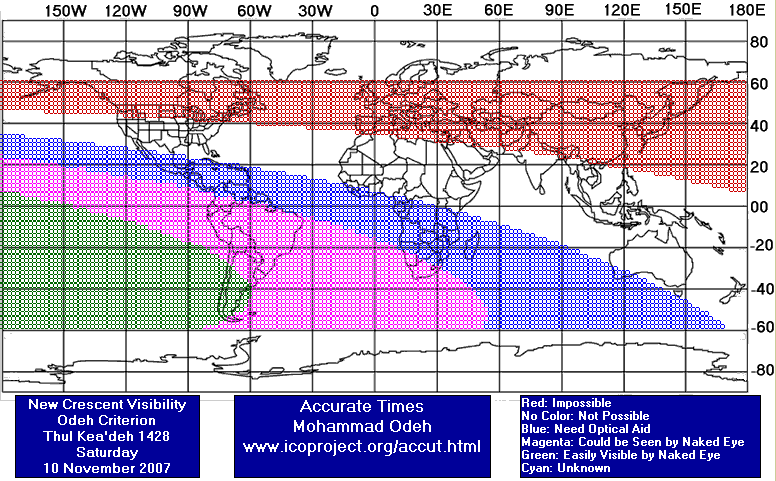
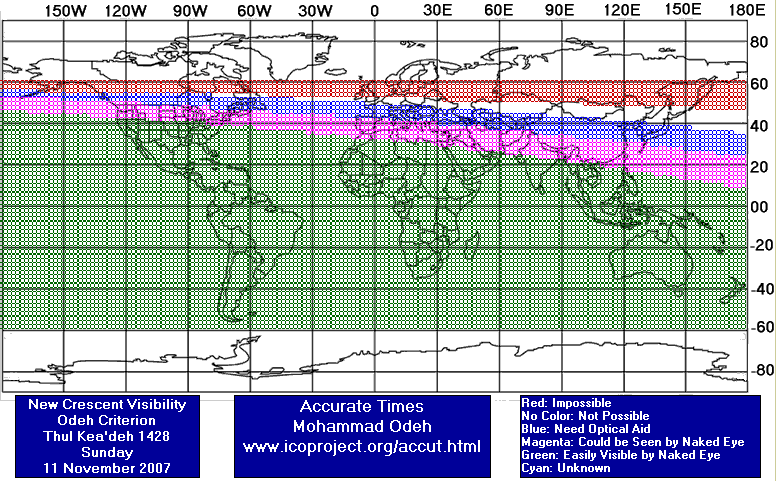

Thul Keadah Waxing (NEW) Crescent Observation Results
Location was: +44.01 latitude, 05.50.51east, longitude, Southern France, 568m altitude. (ALCT test station)
Date: 10.11.2007, Time: 10:52 U.T."

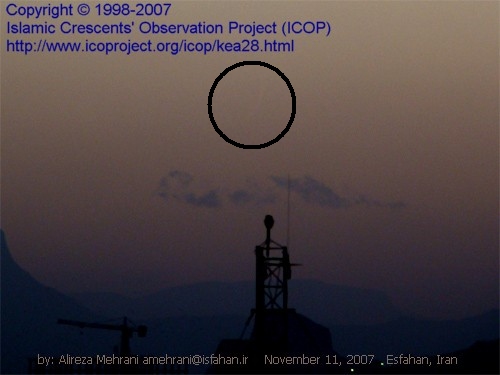
Location: Shahreza , Iran (32:0N 51:52E)
Time Zone: +3.5
By: Hossein Janghorbani
Through: 30x60 binocular
Time: 17:14 LT
Moon Alt: 4.459
Elongation: 17.886
Moon Phase: 2.52%
Moon width: 0.71m
Rel Azi: - 16.525
Moon Age: 38h 40m
The group members:
1. Mohammad Hasan Sanaee
2. Ali Mohajeri
3. Mohammad Ali Khanahmadi
4. Davood Javeri
5. Shahram Rahmati
6. Soroosh Rahmati
7. Reza Janghorbani
8. Hossein Janghorbani
9. Zhila Taghavi
10. Arghavan Mahmoodi
11. Parisa Naderi
12. Batul Ahmadi
13. Qazaleh Maher
14. Najmeh Yoosefi
15. Zahra Fallahi
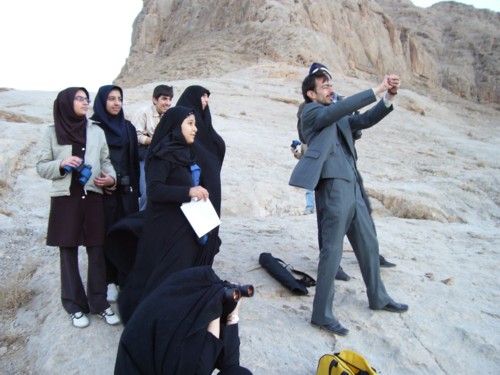
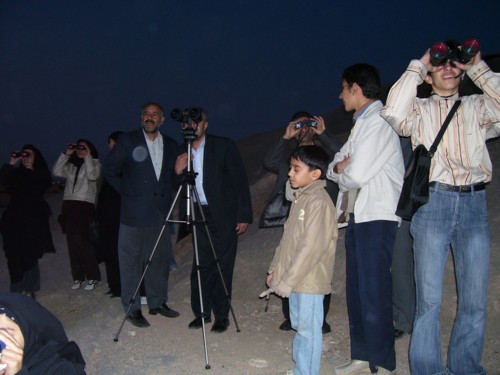
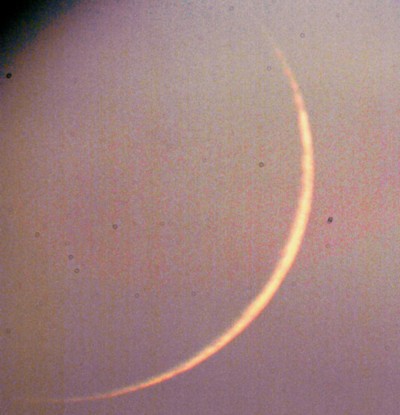
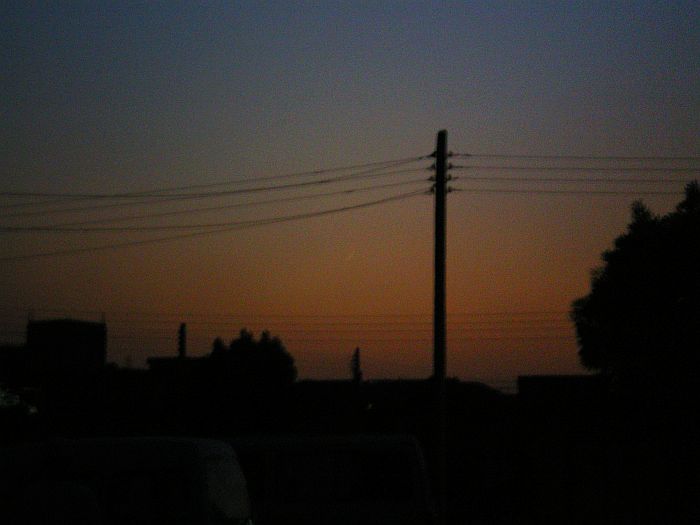

The OFFICIAL First Day in Different Countries

ICOP Official Statement

When to Observe Shawwal Waning (OLD) Crescent ?
